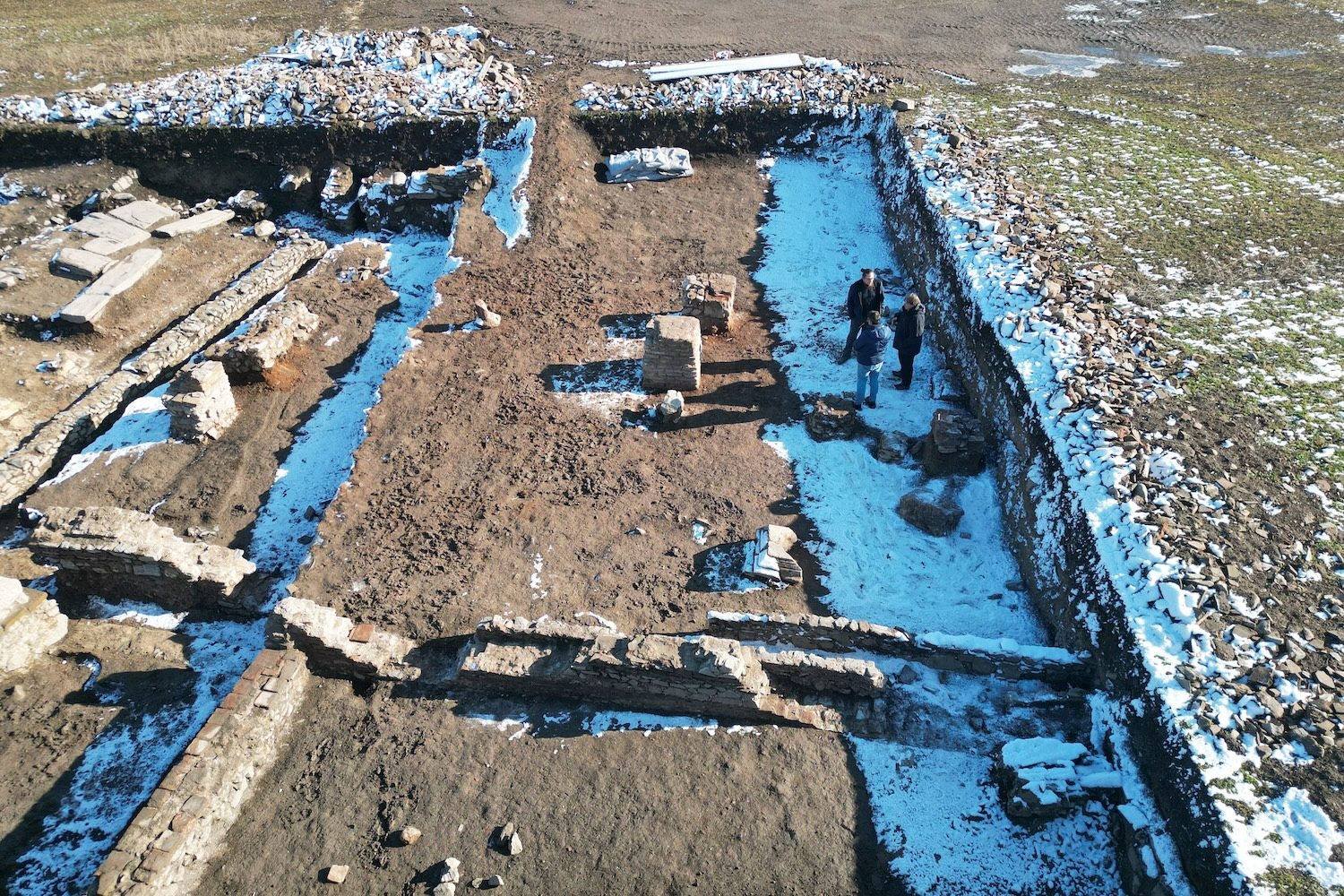SUMMARY
This is AI generated summarization, which may have errors. For context, always refer to the full article.

KOSTOLAC, Serbia – Braving bitter cold and wind, archaeologists in Serbia surveyed the site of an ancient Roman triumphal arch, one of only a handful in the Balkans, that dates back to the third century.
The triumphal arch was discovered in December at the site of Viminacium, a Roman city near the town of Kostolac, 70 km (45 miles) east of Belgrade.
Miomir Korac, the leading archaeologist, said the discovery was made during excavation of the main street of Viminacium, the capital of the Roman province of Moesia.
“This is the first such triumphal arch in this area…. It can be dated to the first decades of the third century AD,” Korac told Reuters on Monday, January 22.
Viminacium was a sprawling Roman city of 45,000 people with a hippodrome, fortifications, a forum, palace, temples, an amphitheater, aqueducts, baths, and workshops. It existed between the first and sixth centuries.
“When we found square foundational footprints made of massive limestone pieces…there was no doubt that this was a triumphal arch,” Korac said.
A fragment of a marble slab with letters reading CAES/ANTO suggested that the arch was dedicated to Emperor Marcus Aurelius Antoninus, known as Caracalla, who reigned from 198 to 217 AD.
It is believed that Caracalla was elevated to emperor in Viminacium, said Mladen Jovicic, an archaeologist.
“We are hoping to find more pieces…. We have found one finely made pillar, beams, but we would like to find more from the inscription on the arch,” Jovicic said.
Excavations of Viminacium have been going on since 1882, but archaeologists estimate they have only scoured 5% of the site, which they say is 450 hectares – bigger than New York’s Central Park – and unusual in not being buried under a modern city.
Discoveries so far include two Roman ships, golden tiles, coins, jade sculptures, religious items, mosaics, frescos, weapons, and remains of three mammoths. – Rappler.com
1 comment
How does this make you feel?




I appreciate the efforts of involved archeologists led by Miomir Korac. Their efforts certainly add to our knowledge of history and related fields.